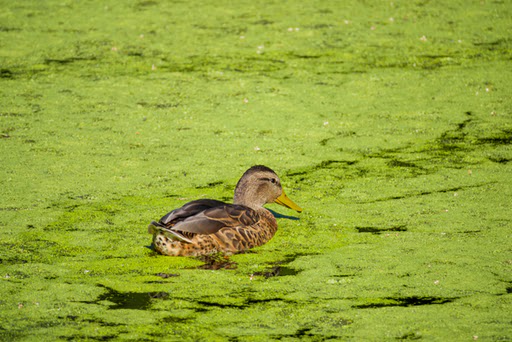Bioremediation is the process of using microbes to clean a contaminated area. It is a cost-effective and completely natural method.
As time goes on, pollution continues to increase. Whether it is the excessive amount of plastic being dumped into our oceans or the pollution released from car exhausts, pollution is a major problem. However, many environmentalists have dedicated their lives to researching how to stop or at least reduce this pollution. Scientists have been actively using an innovative approach called bioremediation for some time now, and it is important for everyone to know about it!
 Soil contaminated with crude oil (Photo Credit : Dr Morley Read/Shutterstock)
Soil contaminated with crude oil (Photo Credit : Dr Morley Read/Shutterstock)
Bioremediation involves using microorganisms to clean up a polluted area. These specific microbes consume and break down pollutants when introduced to a contaminated site. The methods of bioremediation may involve bacteria, fungi, or even plants, depending on the type of pollution. These organisms have the ability to detoxify hazardous waste, ultimately cleaning up polluted sites.
What Do You Mean By Bioremediation?
In environmental terms, remediation refers to the removal of pollution or contaminants from soil, groundwater, sediments, etc. Bioremediation is the process of removing pollutants with the help of biological agents. These agents include various species from the animal and plant kingdoms, such as microbes, plants, fungi, etc. These agents can break down toxic contaminants under certain conditions and help restore the original non-polluted state of a site.
 Culture of microbes in a Petri dish. (Photo Credit : Rattiya Thongdumhyu/Shutterstock)
Culture of microbes in a Petri dish. (Photo Credit : Rattiya Thongdumhyu/Shutterstock)
The microorganisms used in bioremediation can be aerobic or anaerobic. If the breakdown of contaminants occurs in the presence of oxygen, it is known as an aerobic process. If the process occurs without oxygen, it is called anaerobic! The great thing about bioremediation is that these organisms use the breakdown processes to produce energy. It is a win-win situation for both sides!
What Are The Different Techniques Of Bioremediation?
One of the advantages of bioremediation is that it can be carried out through various methods. Some plants have the ability to absorb pollutants and derive nutrition from them. They then release non-hazardous waste products. This process is known as phytoremediation. Some plants used in this technique include Indian Mustard, Willow, Poplar Tree, Sunflower plant, etc.
However, one of the most popular methods of bioremediation is bioaugmentation. This technique is suitable for polluted areas where the presence of oxygen is detected. If the soil with contaminants is well-oxygenated, external microbes can be added. These microbes are cultured in labs and introduced to the sites. They use the available oxygen to break down the contaminants!
 Sunflowers are great for bioremediation (Photo Credit: Getman/Shutterstock)
Sunflowers are great for bioremediation (Photo Credit: Getman/Shutterstock)
Biosparging is another method of bioremediation that is suitable for heavily polluted areas with no oxygen. In these areas, the indigenous aerobic microbes lack the necessary resources to break down contaminants. These zones are usually found deep in the earth where water surrounds the soil, known as saturated zones. By injecting oxygen and nutrients, they can reach these zones and oxygenate the soil, enhancing the breakdown of contaminants by the existing microbes. In bioventing, microbes from another location are introduced to an oxygen-deficient area in the unsaturated zone.
What Are the Benefits of Bioremediation?
You might think that there are many other ways to address pollution, such as creating green spaces, planting more trees, or opting for bicycles instead of cars. However, some environmental issues are more complex. For example, planting trees won’t help clean up petroleum spills, and reducing plastic waste won’t solve oil spills in the ocean.
Interestingly, bioremediation techniques are not only effective but also cost-efficient. Unlike smog cleaning towers, bioremediation doesn’t require any industrial infrastructure, meaning there are no initial costs. Additionally, the microbes used in the process help regulate nutrient levels in water, preventing eutrophication, which is the excessive growth of plants due to high nutrient levels that can harm aquatic life.
 A solitary duck in a lake affected by eutrophication (Photo Credit: Kit Leong/Shutterstock)
A solitary duck in a lake affected by eutrophication (Photo Credit: Kit Leong/Shutterstock)
In addition, the microbial consortia used in bioremediation can also help control unpleasant odors commonly associated with polluted sites. They can remove oil and grease from sewage and reduce Total Suspended Solids in water bodies. The entire process is natural, without any harmful side effects. Furthermore, bioremediation doesn’t require transportation of hazardous materials, making it a truly remarkable remediation method!
Conclusion
The use of biological means to reduce pollution has significantly advanced with the development of bioremediation. In 2010, a microbe called Pseudomonas was used to clean up an oil spill in Mumbai, India. Biosparging has also been successfully employed in regions like Pennsylvania and Western Europe. This demonstrates how biological agents can effectively contribute to environmental cleanup at a lower cost!
